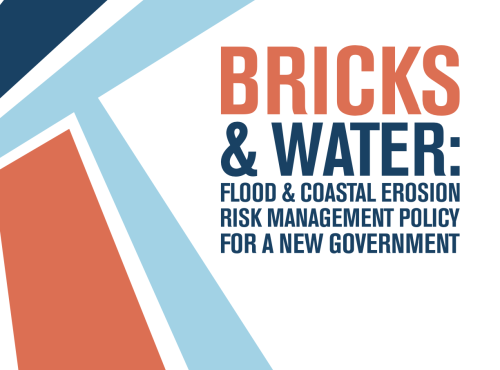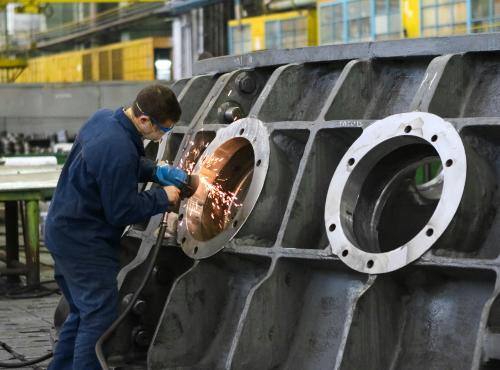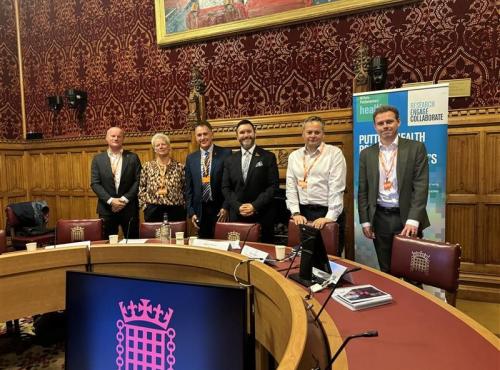Putting green homes at the centre of election pledges
With the election campaigns gaining momentum, parties are beginning to share their manifesto pledges. In this blog Joanna Furtado is looking at what the Labour and the Liberal Democrat parties have committed to in the area of energy efficiency policy.
Concern for the environment is currently polling at an all-time high. Over a quarter of voters place the environment in their top three issues facing the UK- and this rises to nearly 50% for 18-25 year olds. This has prompted some to suggest that this will be a ‘climate election’.
It is therefore unsurprising that there have been recent policy announcements from Labour and the Liberal Democrats focussed on making our homes cleaner and greener. As research by Carbon Connect recently highlighted, domestic heat from homes contributes a similar amount of emissions to the UK’s carbon footprint as all the cars on the road. Currently, the UK’s housing stock is one of the worst insulated in Europe- and only 4% of homes low carbon heating have installed. To meet our legally binding net zero emissions target by 2050, almost all of the UK’s 27 million homes will be need to be converted to having low carbon heat and undergo significant energy efficiency upgrades.
In light of this, the Labour party recently announced their ‘Warm Homes for All’ initiative, which would deliver upgrades to the entire housing stock at a cost of around £250 billion. This would ensure that by 2030, 92% of all cavity walls are insulated, 88% of all lofts are insulated and 6.34 million homes have heat pumps installed. The party suggest that upgrades to low income households would be grant funded, while zero interest loans could be offered to wealthier homes.
They have also pledged to build all new homes to a ‘zero carbon’ standard by 2022, which requires triple glazing, super-efficient insulation and low carbon heating. This is similar to the ambition of the current Conservative Government to bring in a ‘Future Homes Standard’ by 2025.
Meanwhile, the Liberal Democrats have pledged to spend £15bn over the course of the next parliament to upgrade the energy efficiency of 26 million homes by 2030, with measures such as insulation, double-glazing and new heating systems. They also plan to prioritise fuel-poor households, so that all low-income homes are highly insulated by 2025.
Carbon Connect’s recent report ‘Uncomfortable Home Truths’ also made a strong case for delivering whole housing stock upgrades, calling on the current Government to launch a Green Heat Roadmap in 2020 that sets out immediate strategies to deploy energy efficiency and ‘low regrets’ low carbon heating technologies in some parts of the housing stock: with a particular focus on new build, off-gas-grid homes and fuel poor households. The report also asked Government to commit to publishing a strategy by 2025 that sets out how the UK should achieve total decarbonisation of our homes. The next Government should commit to a timeline for launching this strategy in the forthcoming Low Carbon Heat Roadmap, which has been promised for next year.
However, although it is brilliant that there is a strong focus from politicians on improving our homes, the most important thing will be on how these improvements are actually delivered on the ground. As we emphasised in ‘Uncomfortable Home Truths’, it is vitally important that people are brought along with programmes that transition the UK towards cleaner, more efficient homes.
This means ensuring that households are highly aware and engaged with why changes are happening in their homes, have a voice in how that change happens, and have excellent advice, support and protections. The next Government also needs to guarantee there will be high standards of installations of energy efficiency and low carbon heating, to avoid negative experiences of household upgrades. It also means ensuring that changes to homes work around people’s lives- for example, targeting homes that are already undergoing renovations, or ensuring that new low carbon heating systems are installed only when existing ones break, to minimise disruption.
Overall, the next Government should be looking to improve the energy efficiency and carbon impact of homes, whilst placing households at the centre of how and when that improvement happens.



